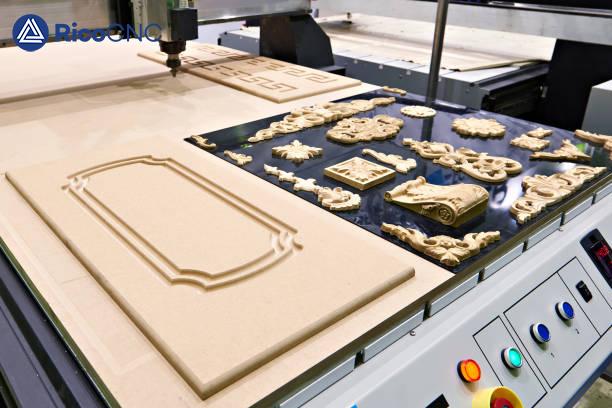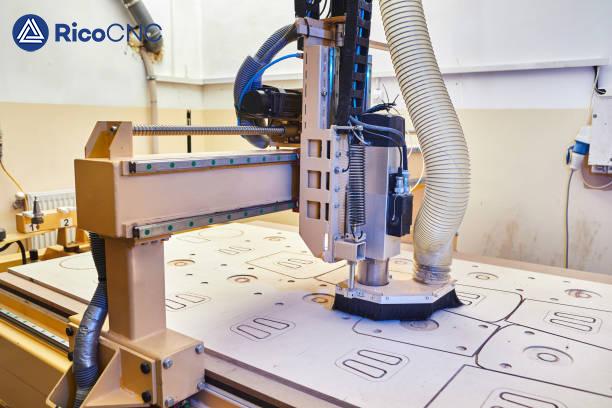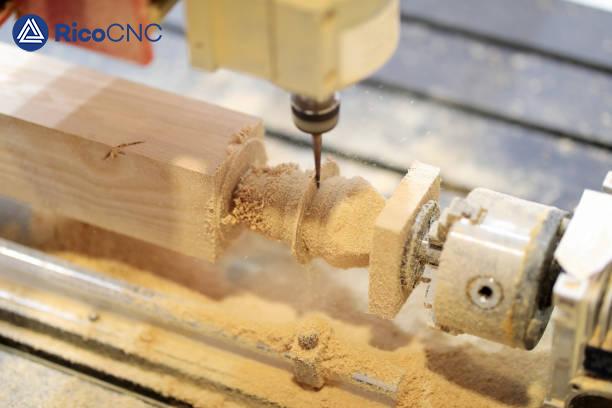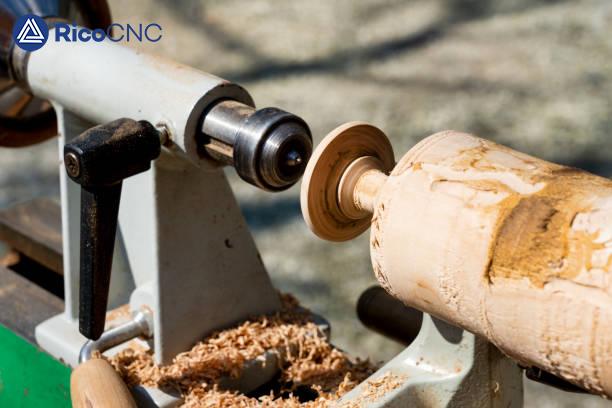Cutting tools are the unsung heroes of modern manufacturing. In the realm of CNC lathes, cutting tool materials have become more advanced, enabling rapid and precise production of components across a broad spectrum of industries. This article will delve into the various CNC lathe cutting tool materials available today, examining their properties, applications, and the factors that make them suitable for different machining operations.

The evolution of cutting tools has played a crucial role in transforming how parts are machined. The original cutting tools were made from high-carbon steel, which, while effective, could not withstand the high temperatures and speeds of modern CNC lathes. Today, materials like carbide, cubic boron nitride (CBN), and high-speed steel (HSS) are used to manufacture cutting tools capable of handling high-speed machining with remarkable efficiency.
· High-Speed Steel (HSS): Often used for general-purpose cutting, HSS cutting tools are tough and have excellent wear resistance. These tools can withstand high temperatures, making them ideal for a variety of applications including facing, turning, and drilling. HSS tools are particularly effective when working with less abrasive materials such as aluminum and other non-ferrous metals.
· Carbide: Carbide cutting tools are incredibly hard, providing high cutting speeds and ensuring excellent surface finish. They are suitable for machining tougher materials like stainless steel, and their use often results in an increase in tool life and machining speeds.
· Cubic Boron Nitride (CBN): This synthetic material is second only to diamond in terms of hardness. CBN cutting tools are perfect for cutting hardened steels and other tough materials that would wear out traditional cutting tools.
The selection of the right material is essential in order to maximize tool life, efficiency, and productivity. It also has a direct impact on surface finish and the speed at which material can be removed from the workpiece.

Coatings are often applied to cutting tools to enhance their properties. These coatings, such as Titanium Nitride (TiN), Titanium Carbonitride (TiCN), and Aluminum Titanium Nitride (AlTiN), improve the hardness of the cutting tools, reduce friction, and provide a higher degree of wear resistance.
· Titanium Nitride (TiN): TiN is a commonly applied coating that helps increase the hardness and lubricity of the tool, which in turn extends the tool's lifespan. This coating makes the tool more suitable for high-speed operations, reducing friction between the tool and the workpiece.
· Aluminum Titanium Nitride (AlTiN): This coating has excellent heat resistance, which makes it ideal for dry machining operations where high cutting temperatures are a concern.
· Titanium Carbonitride (TiCN): TiCN-coated tools offer higher wear resistance and hardness compared to TiN coatings, and they are suitable for applications involving stainless steel and other high-tensile materials.
These coatings, paired with the right cutting tool material, allow for efficient machining while also reducing tool wear and tear.
The performance of CNC lathe cutting tools is significantly influenced by tool geometry, including the cutting edge angle, rake angle, and relief angle. These geometric factors determine the efficiency of material removal, the heat generated during the operation, and the quality of the finish.
· Rake Angle: This angle plays an important role in determining the cutting action. A positive rake angle reduces cutting forces and power consumption, making it easier to remove material. However, it might reduce the strength of the cutting edge.
· Relief Angle: This angle prevents the tool from rubbing against the workpiece, thereby reducing wear and prolonging tool life.
· Cutting Edge Angle: The cutting edge angle determines the direction of chip flow and affects the overall stability of the cutting operation.
For optimal cutting performance, the geometry of the cutting tool must be chosen according to the material being machined, the type of operation (e.g., roughing or finishing), and the desired outcome.
One of the most common questions when selecting CNC lathe cutting tools is whether to opt for High-Speed Steel (HSS) or Carbide tools. Both have their own advantages and limitations, making them suitable for different scenarios.
|
Property |
High-Speed Steel (HSS) |
Carbide |
|
Hardness |
Moderate |
Very High |
|
Wear Resistance |
Good |
Excellent |
|
Toughness |
High |
Moderate |
|
Cost |
Lower |
Higher |
|
Application |
Low to medium cutting speeds |
High-speed machining |
HSS is more cost-effective and has good toughness, making it ideal for general-purpose applications and for machinists who prioritize cost. Carbide tools, on the other hand, provide superior wear resistance and are often used for high-speed operations and for machining harder materials.
"Choosing between HSS and carbide comes down to the specific needs of the machining operation, the material being cut, and the desired surface finish." – RicoAutomation Experts

Lathe cutting tools(RC-V wood lathe tools, RC-X wood lathe tool, 3in1 wood lathe tools, 2 in1 wood lathe tool even scarpers in woodturning industry.) come in various shapes and are designed for specific applications. Below, we break down some of the most common types of lathe cutting tools and their respective uses:
· Turning Tool: Used for removing excess material from the workpiece to achieve the desired shape.
· Facing Tool: Employed to cut flat surfaces perpendicular to the workpiece's axis. Facing tools are essential for preparing the end of a workpiece for further machining.
· Boring Tool: A boring tool is used to enlarge holes that have already been drilled or cast, allowing for precise hole diameters.
· Parting Tool: Parting tools are thin blades used to cut off parts of the workpiece or to create deep grooves.
Each of these tools is designed with specific angles and cutting edges to handle the requirements of different machining operations. For instance, facing tools generally have a negative rake angle to provide a stable cutting edge during machining.
CNC lathes are capable of performing a variety of operations, each of which requires specific types of tools and configurations. Some of the most common CNC lathe operations include turning, facing, threading, and grooving.
· Turning: Involves removing material from the outer diameter of a rotating workpiece to create a cylindrical shape. This operation often uses a side-cutting edge to produce clean and uniform cuts.
· Facing: Facing is used to create a flat surface at the end of a workpiece, often to ensure it's perpendicular to the axis of rotation.
· Threading: This process cuts threads on a workpiece, which can be either internal or external.
· Grooving: A groove is a narrow cut, often used for creating channels on the workpiece surface. Grooving tools have specialized geometries to create deep and narrow cuts without compromising stability.

Carbide tools provide higher hardness, better wear resistance, and higher cutting speeds compared to High-Speed Steel (HSS). They are ideal for high-speed machining and for materials that are harder to cut.
Coatings such as Titanium Nitride (TiN) and Aluminum Titanium Nitride (AlTiN) improve the wear resistance, hardness, and heat resistance of cutting tools, leading to longer tool life and enhanced machining performance.
The key factors include the material being machined, the type of machining operation, the required surface finish, and the tool's cost versus performance.
The rake angle helps control the direction of chip flow, reduces cutting forces, and impacts the overall efficiency of the cutting process.
Yes, coated tools typically offer longer tool life, improved cutting speeds, and better surface finishes, which can lead to overall cost savings in production.
Cubic Boron Nitride (CBN) tools are primarily used for machining hardened steels and other tough materials, but they are not suitable for all types of materials, particularly non-ferrous metals.

Choosing the right CNC lathe cutting tool material is a vital step in any machining operation. By understanding the properties and applications of materials like HSS, carbide, and CBN, along with the use of proper coatings and geometries, manufacturers can significantly improve tool life, efficiency, and the quality of the finished product. Effective cutting tool selection, paired with appropriate CNC lathe settings, can transform productivity, reduce costs, and improve the consistency of machined parts.
Feel free to explore more about the advanced tools we offer, which can greatly enhance your machining processes. Visit our automation components page for innovative solutions that can push your production capabilities to the next level.
Contact: RicoCNC
Phone: 0086-13390848665
Tel: 0086-51268235075
Email: cncsale@ricocnc.com
Add: NO. 60, Weixin Road, Industrial Park, Suzhou, Jiangsu, China, 215000
 online service
online service 0086-15264185266
0086-15264185266 cncsale@ricocnc.com
cncsale@ricocnc.com